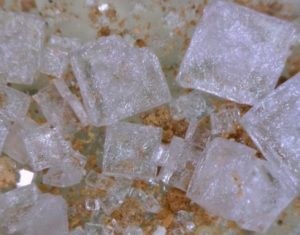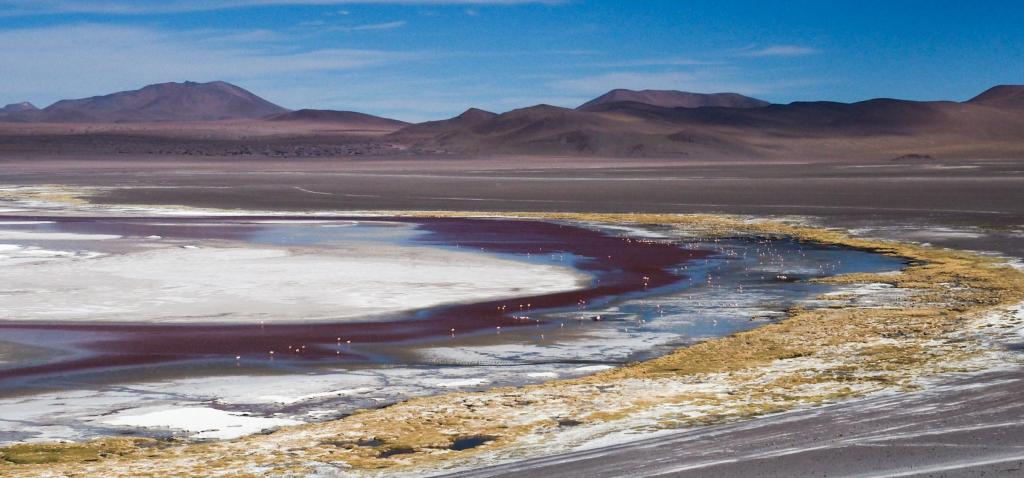23 2.5 Formation of Minerals — Physical Geology – 2nd Edition

Place about ½ teaspoon (~2.5 cm3) of any kind of table salt into a small bowl. Add about 2 teaspoons (~10 mL) of very hot water and swirl it around for a few minutes until all or almost all of the salt has dissolved. (Be careful not to splash yourself with the hot water.)
Place the bowl in a safe place (windowsill, bookshelf), and check back every 24 hours to see what has happened. Depending on the level of humidity in the room, you should see crystals forming within 24 hours, and all of the water should be gone, with reasonably large crystals formed, within about 3 days. They should look a little like those shown here. In other words, they should be cubes.
Now try the same experiment again, but this time put the salt and water into a small sauce pan on the stove top at the lowest heat possible. Within 10 to 20 minutes all of the water should be gone and you should be left with some very small salt crystals—too small to even see their shapes. It takes time for mineral crystals to form.
The global demand for lithium has increased dramatically in the past decade, and will increase even more in the future as long as there is increasing demand for lithium-ion batteries in electronic devices, electric vehicles and for storage of solar- and wind-generated energy. Most of the world’s lithium supply comes from salt lakes (salars in Spanish) like the one shown below in southwestern Bolivia.

Media Attributions
- Figure 2.5.1: © Steven Earle. CC BY.
- Figure 2.5.2: © Isaac Earle. CC BY.
<!– pb_fixme –>
<!– pb_fixme –>

